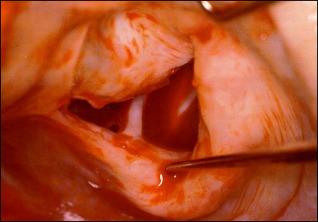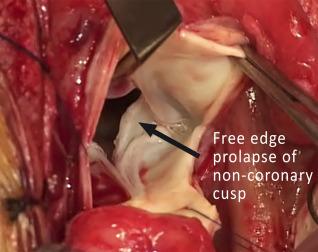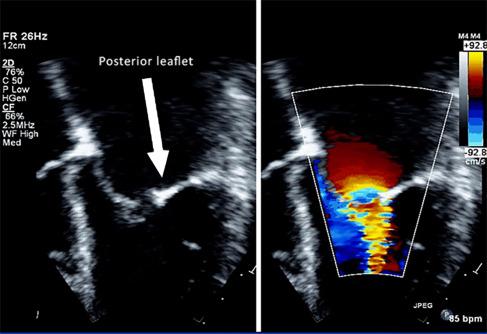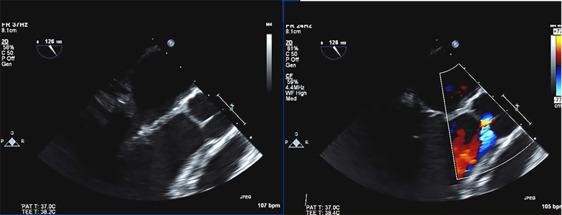Physical Address
304 North Cardinal St.
Dorchester Center, MA 02124
New cases of acute rheumatic fever (ARF) have almost disappeared from most high-income countries (HICs), where rheumatic heart disease (RHD) is now a remnant of the past and usually only seen in the older population where it does not represent a problem significantly different from that of other etiologies of valve disease. By contrast, RHD remains an important health burden in low- and middle-income countries (LMICs), especially those in Asia, Oceania, Africa, and South America. A significant percentage of RHD patients eventually require surgery, mainly in young patients with a mean age of 20–25 years, although surgery is sometimes required in children less than 10 years old. Otherwise, patients may present in middle age or older with end-stage chronic rheumatic valvular heart disease, which is more characteristic of middle-high income countries.
In the absence of recurrent ARF, the prognosis for those with mild and even moderate RHD is good. However, continued medical management alone is insufficient for those with severe RHD. Those with severe functional valvular changes and dilated ventricles experience progressive cardiac deterioration over time (see Chapter 6 ). The major sequelae of chronic severe RHD includes infective endocarditis, atrial fibrillation, systolic and/or diastolic heart failure, thromboembolism, and secondary pulmonary hypertension. Timely and appropriately performed surgery and perioperative care will be required. This is frequently hindered because of delayed presentation or recognition, late referral, poor access to tertiary cardiac services, prohibitive cost, inadequate logistical or political support, and lack of long-term care and follow-up.
Cardiac surgery requires a complex infrastructure and the skills of a multidisciplinary team. In a significant number of LMICs, especially in Africa, these cardiac surgical facilities are either not available or are unable to cope with the very large demand. The ratio of cardiac surgery centers per million inhabitants in subSaharan Africa (excluding South Africa) is 1:33, well below the ratio of 1:1 in Europe. Even in better-developed countries, such as in India and other Southern Asian countries, the disease remains a significant health system burden. Outcomes for severe RHD are also reflected by the wealth of the country. In Ethiopia the mean age of death is 25 years, in Fiji it is 37 years, and in New Zealand 55 years.
In sites with limited resources, there is frequently competition with congenital heart diseases, which may receive preferential case selection by the surgical teams. Surgery for congenital heart disease tends to be offered to children originating from wealthier population groups who have better access to healthcare, whereas rheumatic patients more often originate from poorer sectors of the population with poorer access and less advocacy for healthcare.
There may have been an improvement in these inequities in the 21st century. This has in part been driven by the efforts of humanitarian missions taking place in LMICs, some with a considerable degree of success leading to well-established local surgical facilities and teams. Nevertheless, there is still much to do, and unfortunately the economic development of LMICs is not sufficient to offset the shortcomings discussed earlier.
In 1923, Dr. Elliott Cutler of the Peter Bent Brigham Hospital performed the world's first successful heart valve surgery—a closed mitral commissurotomy (CMC)—in a 12-year-old girl with rheumatic mitral stenosis (MS). However, consistent clinical application was initiated only much later, in the 1940s and 1950s, initially by the “finger-fracture” technique via left thoracotomy and left atrial (LA) appendage, later advanced by Logan in 1959 with the development of the Tubbs mechanical dilator. Several modifications of the initial technique were since proposed, including right chest and transsternal approaches.
With the advent of open-heart surgery, CMC was progressively abandoned in favor of the open mitral commissurotomy (OMC) approach, initiated in the late 1950s and early 1960s. This method provides better visualization of the mitral valve apparatus and a more precisely directed commissurotomy, as well as improved techniques to repair the chordae tendinae and papillary muscles, when involved. However, CMC is still performed in many parts of the world today, particularly in LMICs and remote areas, as it remains a low-risk and inexpensive approach. It is also applicable to pregnant women and to patients with restenosis.
Finally, percutaneous mitral balloon commissurotomy (PMBC) was introduced by Inoue in 1984, and surgical mitral commissurotomy, both CMC and OMC, progressively has become a rarity in most technically advanced surgical centers, because the valves amenable to commissural split were treated by PMBC. Some surgeons rapidly lost the capability (and the will) to preserve more complex stenotic mitral valves.
A major development in the management of RHD was the introduction of valve replacement surgery. Aortic valve replacement with a mechanical valve prostheses was introduced by Albert Starr in 1961. Dwight Harken pioneered mitral valve replacement in 1962, which permitted treatment of valves with complex pathology not amenable to mitral commissurotomy or other type of repair. Stimulated by early beliefs of a simple and durable therapy for all kinds of mitral valve pathology, valve replacement became the most common procedure for the treatment of rheumatic mitral valve disease, even in developing countries. It is still generally thought to be less complicated surgically than repair and have a more predictable outcome.
Bioprostheses were introduced later, in the late 1960s, by Carpentier and others, ostensibly to avoid the thromboembolic complications of mechanical valves. However, it soon became clear that durability due to degeneration of the tissues was limited, especially in younger patients. It is now evident that mitral valve replacement with a mechanical or bioprosthetic valve has increased morbidity and mortality in the young compared to mitral valve repair. RHD patients often originate from endemic populations that are less educated, more disempowered, and largely nonadherent to care. In these settings, repeat surgery in those patients with previous mechanical or biological valves has a higher operative mortality because events tend to be more acute and catastrophic. Hence, the attention turned back to valve conservation procedures.
In the surgical treatment for aortic valve disease, the same considerations apply, although the incidence of prosthetic valve complications is lower. Perhaps, this can be attributed to the higher flow velocity in the left ventricular outflow tract, thus reducing the risk of thrombotic complications and requiring less intensive anticoagulation. Recently, percutaneous implantation of aortic and pulmonary heart valves has evolved. Percutaneous mitral valve implantation remains in the developmental stage, and these techniques are generally unavailable in rheumatic-endemic regions due to lack of facilities and exceptionally high costs.
Lillehei initiated repair for mitral regurgitation (MR) in 1957, but it was the efforts of Carpentier, Duran, and others, in the late 1960s, that made it more scientific and broadened its applicability. However, repair for rheumatic mitral valve disease, beyond CMC or OMC, did not gain widespread acceptance in this era. The ongoing inflammatory process, which leads to scarring of the valve structures, was a limiting factor of long-term durability. The complex technical issues made repair unappealing in these patients, given the involvement of the entire mitral valve apparatus with fibrosis, thickening, shortening, and subsequent appearance of areas of calcification.
Nonetheless, Chauvaud et al., in 2001, claimed excellent results in an adult group of 951 patients, mostly rheumatic, who underwent mitral valve (MV) repair using Carpentier techniques (4% during the acute rheumatic phase) from 1970 to 1994. These included the following: annuloplasty (95%); chordal shortening (75%); chordal transfer (10%); chord resection (7%); pericardial leaflet extension (7.5%); or leaflet calcium stripping (5%).
More recently, with the introduction of some technical modifications, better knowledge of the pathology and, above all, reports of excellent outcomes of mitral valve repair in comparison to replacement in other pathologies, especially degenerative mitral valve disease, led to renewed efforts by experienced surgeons to repair rheumatic pathology with a different eye. There are now widespread reports of excellent results of rheumatic mitral valve repair from multiple regions in the world.
In summary, there has been considerable evolution of cardiac surgical techniques for valve surgery for severe RHD. Mitral valve repair is the hallmark of the competent rheumatic surgeon but the unique features of rheumatic mitral valve disease mean that valve repair remains challenging. The remainder of the chapter describes in more detail specific rheumatic valve lesions and their surgical management.
The mitral valve is the commonest valve to require surgery in RHD. It is often the dominant lesion but in about 30% of cases there is also some aortic disease and in a further 15% of cases there is associated tricuspid valve disease. Recurrent episodes of ARF result in cumulative damage to the mitral valve to a point where there is a significant impact on valve function. Disease pathologies vary by regions and age of presentation. MR predominates in Oceania, and few children have advanced MS. Reports of MS are more common in children from India, Africa, and the Middle East due to later presentation after multiple rheumatic episodes and persistent inflammatory activity. Mixed MR and MS may be present. By adulthood, MS becomes more prevalent throughout the world. The recent REMEDY study, which documented the pattern of native rheumatic valve disease in 2475 children and adults from across African and Asian countries, provides insight into contemporary patterns and presentation of RHD. Mixed aortic and mitral valve disease was the dominant lesion from the second decade onwards. Isolated MR was the most frequent lesion in those under 10 years old. Pure MS was seen more frequently from the third decade onwards, with the highest prevalence (14%) in the 71–80 year age group.
The pathophysiology starts with annular dilatation and loss of the saddle shape of the mitral annulus. Inflammatory softening of the chordae tendineae causes elongation of the chordal apparatus, particularly the longest chordae that are those leading to the anterior leaflet, although this elongation process can also involve the posterior leaflet chordae. These changes tend to predominantly affect the primary over the intermediate chords as they are thinner and more delicate, and eventually these chords can occasionally rupture. Chordal rupture leads to acute mitral regurgitation in patients with a first episode of ARF and, with a noncompliant LA, often leads to acute pulmonary edema (see Chapter 16 ). Over the longer term, with recurrent episodes of ARF, there is retraction of the thick intermediate chords and this restricts the motion of both leaflets but seems to most commonly fix and retract the posterior leaflet, particularly at the P2 and P3 scallops.
Often, the restriction is more severe opposite the prolapsing anterior leaflet segment. The turbulent MR jet can cause fibrosis of the leaflet itself and the surrounding areas of the atrial wall. The edges of the leaflets that no longer coapt become thickened and rolled back. Loss of flexibility of the leaflet will impair the probability and durability of repair. In its most chronic state, these valves become grossly thickened with chordal apparatus that becomes matted together and so distorted that it is difficult to distinguish the apparatus from the leaflet itself. The two leaflets fuse at the commissures, and fibrosis extends not just from the edges of the leaflet but all the way through the annulus. Eventually, a “fish-mouth” appearance of the valve occurs where there is very little free motion of either leaflet and just a fixed orifice that flaps in and out with systole and diastole but remains continuously open ( Fig. 8.1 ). There is usually both severe MS and MR in this scenario that is no longer amenable to repair.

The patient with MR has an enlarged left ventricular end-diastolic dimension. The left ventricular end-systolic dimension (LVESD) is commonly well maintained with a normal left ventricular ejection fraction (LVEF). Over time, however, ventricular function starts to deteriorate with rising systolic dimensions and a falling LVEF. Ventricular dimensions should be normalized for body surface area in children.
In the earlier stages, there can be severe regurgitation without symptoms. This is still a good stage at which to offer mitral valve repair if indicated by ventricular dimensions. Many such patients with severe asymptomatic MR are detected by echocardiographic screening programs. The reader is also referred to Chapter 6 for a wider discussion on the indications for cardiac surgery for MR.
Aortic valvular disease in the context of ARF can occur alone but is more commonly associated with at least mild mitral abnormalities. The aortic leaflets soften and lose their elasticity during the acute inflammatory episode, and this causes the free edges of the leaflet to elongate. The longer the free edges get, the more prolapse can develop to the point where sometimes the free edges drop below the belly of the cusp. This often appears to affect one leaflet first that results in an asymmetric jet easily seen by echocardiography in the parasternal long axis view. At that point, repair is relatively straightforward as the other two leaflets can be almost normal in size and shape ( Fig. 8.2 ).

In the longer term, however, the turbulent jet tends to create thickening at the leaflet edge and it then rolls back with loss of surface area of the leaflet. Additionally, the aortic regurgitation (AR) itself causes dilatation of the left ventricle and of the aortic annulus. As the annulus dilates, the surface of coaptation between the aortic leaflets deteriorates. Eventually, a triangular gap will appear in the center of the three leaflets that gradually enlarges. The typical chronic appearance of severe aortic rheumatic disease is a large triangular gap in the center of the aortic valve with all three leaflets appearing very shallow and retracted and with rolled edges.
As indicated earlier, the left ventricle gradually dilates with severe aortic regurgitation and both the diastolic and the systolic dimensions gradually increase with time. The LVEF usually remains normal but in a chronic state it deteriorates, particularly if there is combined aortic and mitral valve disease. In those who present late with advanced disease, there is a risk that, even after combined surgery, left ventricular function will not return to normal and for that reason patients with combined aortic and mitral regurgitation should be treated more promptly than when there is single valve disease.
However, during the acute phase of rheumatic carditis, mild and moderate AR can improve over time as the inflammatory markers settle. It is therefore reasonable to observe patients with combined disease carefully during the acute phase with the aim of avoiding acute aortic valve surgery. Primary rheumatic aortic valve stenosis (AS) is rarely seen in RHD.
Secondary tricuspid regurgitation (TR) is commonly seen in RHD patients and is usually secondary to severe mitral valve disease. Primary rheumatic tricuspid disease can occur as tricuspid stenosis, TR, or mixed valve disease. The pathological process of annular dilatation occurs primarily at the anterior and posterior portions of the annulus, corresponding to the right ventricular (RV) free wall. The RV also dilates, which results in decreased leaflet apposition and further TR. TR is associated with, and allows assessment of, pulmonary hypertension. In the presence of severe TR, there is often significantly elevated right ventricular pressures and pulmonary hypertension.
Patients with more chronic and severe RHD have pathologic changes of the tricuspid valve that are similar to those which one finds on the mitral valve. Anterior and posterior leaflet chordae can be elongated significantly and septal leaflet chordae are retracted. The leaflets themselves shrink, developing a thick rolled edge resulting in loss of leaflet area, and significant tricuspid valve stenosis occurs. Commonly, this involves the anterior leaflet that can be very difficult to correct if associated with a restricted septal leaflet that is held down against the right ventricular side of the basal ventricular septum.
Severe TR with pulmonary hypertension can result in the clinical scenario of a severely cachectic patient due to hepatic venous congestion leading to severe anorexia and vomiting. There is usually a severely dilated right atrium with associated atrial arrhythmias. The lungs may well be edematous in the context of left-sided valve disease, despite diuretics preoperatively. Patients with severe TR often have labile pulmonary artery pressures and pneumonias postoperatively.
The roadmap to a precise diagnosis of RHD was developed in previous chapters of this book, in particular Chapter 5 . Here, we wish to stress particular aspects that are important to assist the surgical team in the design and conduction of the surgical treatment, as well as for the evaluation of the respective results.
Serial ventricular dimensions, both diameter and volume measurements, in systole and diastole, normalized for body surface area to Z scores in children, are paramount in decision-making for threshold for cardiac surgery in chronic MR and AR. Fractional shortening and ejection fraction are reported with a comment on the patient's left and right ventricular function (see also Chapter 6 ). If there is impaired function, the estimated right ventricular pressure should also be reported to confirm or rule out the presence of pulmonary hypertension. The annuli are always measured and in children these are normalized by Z scores. A mean pressure gradient is measured through the mitral and/or aortic valve if it is affected.
Over the last few decades, echocardiography has developed into an incredibly useful tool for the analysis of valve function with pictures now so accurate in real time detail that they enable surgeons to fine tune repairs with a shorter cross-clamp time. Preoperative echocardiography has now become, in some aspects, better than direct visualization as the surgeon can now plan the specific steps for the repair.
The echocardiographer and surgeon need to work closely together in analyzing the mitral valve before attempting repair or deciding on replacement and for this reason it is crucial for there to be agreement on the terminology used. A commonly used terminology is to describe the anterior mitral leaflet with segments one, two and three (A1, A2, A3) lateral to medial and similarly to the posterior leaflet (P1, P2, P3). Degrees of prolapse of each segment are subjectively graded mild, moderate, or severe. The direction of the color jet and the degree of thickening of leaflets are described. Three-dimensional echocardiography allows visualization of the valve from the atria and ventricle (mitral disease) and from the ventricle and aorta (aortic disease) allowing “surgical views” of these valves.
Before surgery, the surgeon and cardiologist look at this data together to discuss the detail and review the images. If there was an aspect that was not clear, transesophageal echocardiographic (TEE) analysis is undertaken. This can also be performed “on the table” immediately before operation to lower cost and avoid a separate anesthetic for children.
Where a repair is being contemplated, there are a number of specific echocardiographic details that need to be analyzed by the surgeon. One needs to know the annulus and the Z score as this correlates with how much spare leaflet tissue is available. Echocardiographic sweeps from back to front are necessary to analyze the relationship of the coapting edges of A1 to P1, A2 to P2, and A3 to P3. It is important to note the position of the leaflet tips in systole in relationship to the plane of the annulus as this allows an assessment of the degree of prolapse (mild, moderate, or severe) of any one of the specific segments.
The direction of the color jet in the left atrium also gives a clue as to which leaflet is prolapsing anterior or posterior. The most frequent scenario is a posteriorly directed jet of mitral regurgitation due to anterior leaflet prolapse. The short axis color flow imaging will reveal where the regurgitation is occurring at P1, P2, or P3 or a combination of any of the leaflets. This can influence how one adjusts gathering sutures during the annuloplasty. During systole and diastole, one should note how much movement there is in each of the leaflets. It is not uncommon for the posterior leaflet to be quite fixed and rigid.
When analyzing prolapse of the anterior leaflet one should note whether it is the whole of the leaflet or actually just the outer rim of the leaflet prolapsing. This may occur when the primary chordae of the anterior leaflet are elongated and the intermediate chordae are at the correct length, this gives a “dog leg deformity” of the anterior leaflet ( Fig. 8.3 ).

Less commonly, the posterior leaflet prolapses, and this results in an anteriorly directed jet of mitral regurgitation.
A mean mitral valve gradient over 6–8 mmHg indicates definite mitral stenosis with mean gradients below 4–5 mmHg attributable to severe regurgitation. If the left atrium is very large and out of proportion to the degree of regurgitation, that is cause to suspect significant mitral stenosis.
The size of the annulus at the sinuses and at the sino-tubular junction is noted. The position of the bellies of each of the cusps should be observed. If one is hanging lower than the others in association with an eccentric jet, then this indicates a single leaflet prolapse. This is usually more easily repairable as two out of the three leaflets are relatively well preserved ( Fig. 8.4 ). The direction of the regurgitant jet can be straight down the left ventricular outflow tract in the long axis view or it may be eccentric.

In a short-axis view, coaptation defects are noted where there appears to be a gap and where the color jet appears: is it a triangular jet in the middle indicating all three leaflets are retracted and failing to coapt or is it around one particular leaflet or at one particular commissure? The mobility and the thickness of the leaflets should also be observed. The position of the coronary origins should be noted as well, because occasionally there may be an unexpected coronary anomaly making homograft root replacement more complicated to perform.
Similar to the mitral valve, measuring the annulus size is important when analysing the tricuspid valve, although this may be a little bit more difficult to measure accurately than the mitral annulus. In other respects, the tricuspid valve can be analyzed on echocardiogram in a very similar way to the mitral valve including the mobility of the leaflets, any tethering effect on the chordae tendinae, the position of the tips, the direction of the color jet, and the presence of retraction or of prolapse of the leaflets. Preoperative transesophageal echocardiography (TTE) evaluation should also document the degree of RV dilatation and assess the severity of TR. However, there is no reliable method to judge how much of the TR is reversible when the left heart valve lesions are corrected
As a rule, all of this preoperative information can be obtained using two-dimensional and three-dimensional transthoracic echocardiography in younger children of normal weight. Initially, TEE were performed on the operating table as the case began, but now some groups prefer to perform them as a separate procedure to enable more time to be spent analyzing the data, particularly 3-D echocardiography, to optimize the operating time.
Three-dimensional echocardiography has become extremely useful in giving surgeons greater detail of exactly where there is a problem with leaflet coaptation. There is a significant amount of skill and expertise required in developing good 3-D pictures, but this allows a surgical view like standing in the left atrium and watching the valve open and close in real time. Many surgeons attribute better repair results in recent years to 3-D echocardiography assessment. Following valve repair, TEE should be performed to assess the result.
Become a Clinical Tree membership for Full access and enjoy Unlimited articles
If you are a member. Log in here